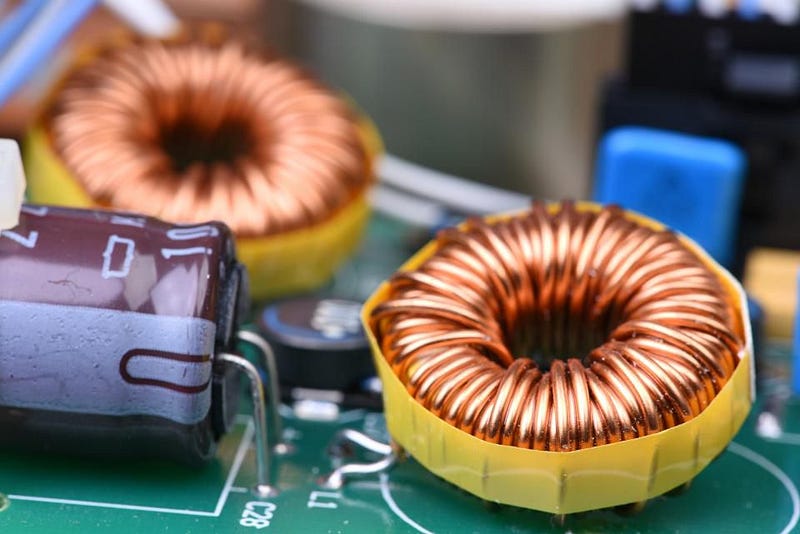› Forums › IoTStack › News (IoTStack) › Ultra-Miniaturized Electronics Thanks To A New Type Of Inductor
Tagged: HW tooling, Tooling_H4
- This topic has 1 voice and 0 replies.
-
AuthorPosts
-
-
July 28, 2018 at 6:52 pm #23271
One of the three basic circuit elements just got a lot smaller for the very first time, in what promises to be a trillion-dollar breakthrough.
In the race for ever-improving technology, there are two related technical capabilities that drive our world forward: speed and size. These are related, as the smaller a device is, the less distance the electrical signal driving your device has to travel. As we’ve been able to cut silicon thinner, print circuit elements smaller, and develop increasingly miniaturized transistors, gains in computing speed-and-power and decreases in device size have gone hand-in-hand. But at the same time these advances have comes in leaps and bounds, one fundamental circuit element — the inductor — has had its design remain exactly the same. Found in everything from televisions to laptops to smartphones to wireless chargers, radios, and transformers, it’s one of the most indispensable electronic components in existence.
Since their 1831 invention by Michael Faraday, their design has remained basically unchanged. Until last month, that is, when a UC Santa Barbara team led by Kaustav Banerjee demonstrated a fundamentally new type of inductor. Without the limitations of the original inductor design, it should allow a new breakthrough in miniaturization and speed, potentially paving the way for a more connected world.
One of the earliest applications of Faraday’s law of induction was to note that a coil of wire, which would create a magnetic field inside, could magnetize a material, causing a change in its internal magnetic field. This changing field would then induce a current in the coil on the other side of the magnet, causing the needle (at right) to deflect. Modern inductors still rely on this same principle.(Wikimedia Commons user Eviatar Bach)
The classic way inductors work is one of the simplest designs possible: a simple coil of wire. When you pass a current through a loop or coil of wire, it creates a magnetic field through the center. But according toFaraday’s law of induction, that changing magnetic field then induces a current in the next loop, a current which opposes the one you’re trying to create. If you create a greater coil density, or (even better) put a core of magnetizable material inside the inductor, you can greatly increase the inductance of your device. This results in inductors which are very effective, but also which are required to be physically quite large. Despite all the advances we’ve made, the fundamental limitation of this design style means there’s been a limit to how small an inductor can get.
Even with all the revolutions the 19th, 20th and 21st centuries have brought along in electronics, the conventional magnetic inductor, in concept, remains virtually unchanged from Faraday’s original designs.(Shutterstock)
The applications, however, are tremendous. Along with capacitors and resistors, inductors are one of the three passive elements that are the foundations of all electronics. Create an electric current of the right magnitude and frequency, and you’ll build an induction motor. Pass the magnetic core in-and-out through the coil, and you’ll generate electricity from a mechanical motion. Send both AC and DC currents down your circuit, and the inductor will block AC while allowing DC to pass through. They can separate signals of different frequencies, and when you use a capacitor along with an inductor, you can make a tuned circuit, of paramount importance in television and radio receivers.
hat’s where the work of Banerjee’s Nanoelectronics Research Lab and their collaborators comes in. By exploiting the phenomenon of kinetic inductance, they were able to, for the first time, demonstrate the effectiveness a fundamentally different kind of inductor that didn’t rely on Faraday’s magnetic inductance. Instead of using conventional metal inductors, they used graphene — carbon bonded together into an ultra-hard, highly-conductive configuration that also has a large kinetic inductance — to make the highest inductance-density material ever created. In a paper last month published in Nature Electronics, the group demonstrated that if you inserted bromine atoms between various layers of graphene, in a process known as intercalation, you could finally create a material where the kinetic inductance exceeded the theoretical limit of a traditional Faraday inductor.
-
-
AuthorPosts
- You must be logged in to reply to this topic.

